Part One: ChicagoTalks’ urban affairs series
May 26, 2009 – After being shuttered for 20 years, St. Boniface church is nearing salvation, or destruction.
A 90 day hold on the church’s demolition expired March 5, but talks about the building’s future continue. The city and the archdiocese are currently looking into a land-swap deal as a last resort to preserve the 105-year-old near West Side church.
Jonathan Fine, executive director of Preservation Chicago, a non-profit devoted to preserving historic architecture, said if the land-swap goes through, the city would work with a private developer to turn St. Boniface into an assisted living center.
St. Boniface raises a related issue that has pitted preservationists against church leaders. A clause in the city’s landmarks ordinance requires the consent of a church before a building can be dedicated as a landmark—a privilege not afforded to private owners. However, the clause only applies to churches that are currently being attended. In the case of St. Boniface, the city can technically grant landmark status because it has been shuttered, but the issue remains relevant.
Church leaders say it is a matter of separating church from state, while preservationists argue that religious organizations are given unnecessary advantages.
“It’s a matter of real estate,” Fine said. “[The Archdiocese] just don’t want people to tell them what to do with their property. They have never been interested in seeing it preserved for any historical reason.”
Although the Archdiocese has received offers to preserve the building, none of them has been enough to cover the actual value of the property, Fine said.
In the past, the Archdiocese has estimated they would need a $25 million donation to salvage St. Boniface.
Even though the building has been deteriorating for 20 years, Lee Bey, a former architecture critic for the Sun-Times who also worked as deputy chief of staff for Mayor Daley, said the building can be preserved. He said preservationists do a good job of raising awareness about at-risk buildings, but often expect the developer to make the building pay for itself.
“The question is the millions upon millions it will cost,” Bey said. “Could they not just build a church from the ground up, using new architecture? Make it sustainable, green and actually benefit the community better that way, instead of saving a relic at a cost that will be astronomical.”
Martin Jablonski, a real estate advisor for the Archdiocese, said each religious organization must be able to adapt to the mission of that church and the parishioners. Sometimes, instead of a church, they need a gymnasium, a library or a school he said.
“That is not just a landmark special exemption, but it goes back to the constitution separating church from state,” he said.
Some argue the clause, which indirectly provides the right to demolish, gives this special right to one group of private owners at the expense of the well-being of Chicago.
“Church owners have undertaken the demolition themselves in order to engage in land-banking for later sale—all under the guise of religious freedom,” Fine said, while explaining the clause.
With pressure from both preservationists and the Archdiocese, the building remains standing but unoccupied as talks continue.
“I’d be hard pressed as to hazard a guess whether it will be weeks or months,” Jablonski said. “It’s a complex matter involving several agencies and subsets within the archdiocese in terms of coming to an appropriate [agreement].”
The landmarks commission of Chicago wouldn’t comment on the progress of the closed-door meetings beyond the March statement that reads, “The City continues to work with Ald. Walter Burnett, Jr. (27th), and the Archdiocese to find a viable reuse option to preserve the building and is considering a possible ‘swap’ with the Archdiocese of the St. Boniface property for a publicly-owned property.”
In this situation an agreement needs to be reached between the archdiocese and the city sometime soon, although it is unclear what that agreement would look like.
“We hope that [the deal goes through] because it looks like it’s the absolutely only thing that will save the church from demolition,” Fine said.
“There are some wonderful things they could do with the church structure that would preserve it architecturally from the exterior, but also provide large public spaces that would preserve some of those interior spaces,” Fine said. “There have been lots of opportunities to save this building over the years, and we’re hoping this one will work.”
Currently there are 363 open parishes, according to the Archdiocese of Chicago Web site. Of those, there are four parishes nearby St. Boniface: Holy Innocence, St. Stanislaus, Holy Trinity and St. John Cantius. Jablonski said he would guess that most of the St. Boniface congregation migrated to Holy Innocence after St. Boniface closed in 1989.
“As with any time they closed a parish, there were a minimum of three years that were dedicated to meetings because you’re really talking about upsetting, not just bricks and mortar, but social connections that people have,” he said.
In an email conversation with Peggy Lavelle, an archivist for the Archiocese, she named six Catholic churches in the Chicago area currently on the National Register of Historic Places: Holy Name Cathedral, Notre Dame de Chicago, St. James at Sag Bridge (church and cemetery) in Lemont, Old St. Patrick’s, St. Thomas the Apostle and Holy Family in North Chicago.
Currently, there are only three buildings owned by the Archdiocese with city landmark status — the Assumption School Building on Illinois St., the Cardinal Meyer Center (an office building) and St. Gelasius Church, Lavelle said.
St. Gelasius was landmarked by the city in 2004. The main difference between the two churches is that St. Gelasius was in better condition than St. Boniface, Fine said.
Bey, who examined St. Boniface in 2003 for Mayor Daley as his deputy chief of staff, said St. Boniface is an interesting case.
“Clearly there other churches in Chicago that are more beautiful, that are more worthy of landmark status just on the basis of architecture,” Bey said.
On a scale of one to ten, ten being the most beautiful church in Chicago, Bey gave St. Boniface a five, and said it’s an average church of its era. But the location of the church plays a larger role.
“What makes St. Boniface interesting is that it’s built to a proper scale—as a building it’s not to big, and it’s not too small,” he said. “There’s a park across the street, and there’s a good relationship physically and visibly between the park and the church. It’s kind of like an ensemble—[an] ensemble that’s worth maintaining.”







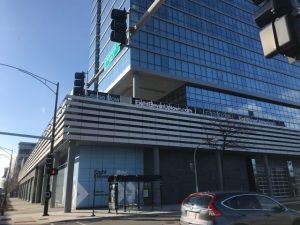
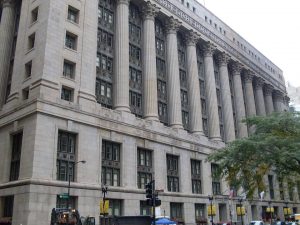
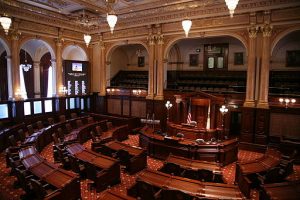




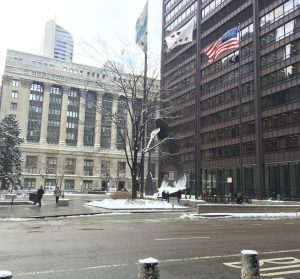
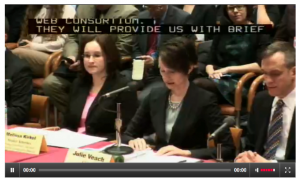
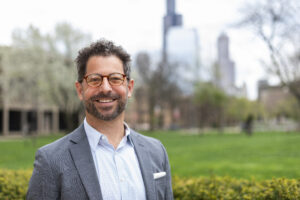


Be First to Comment